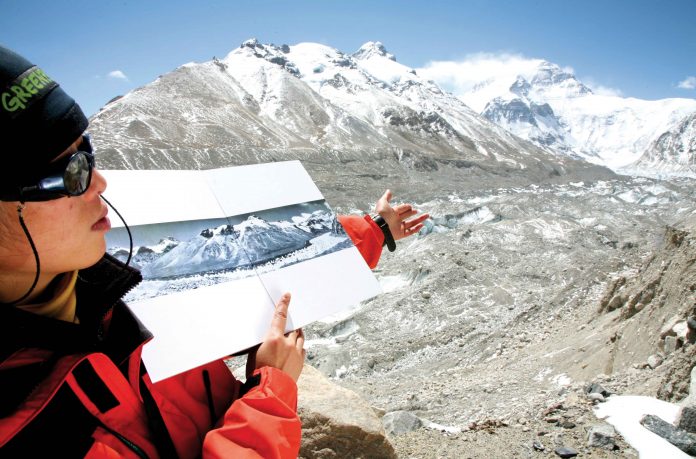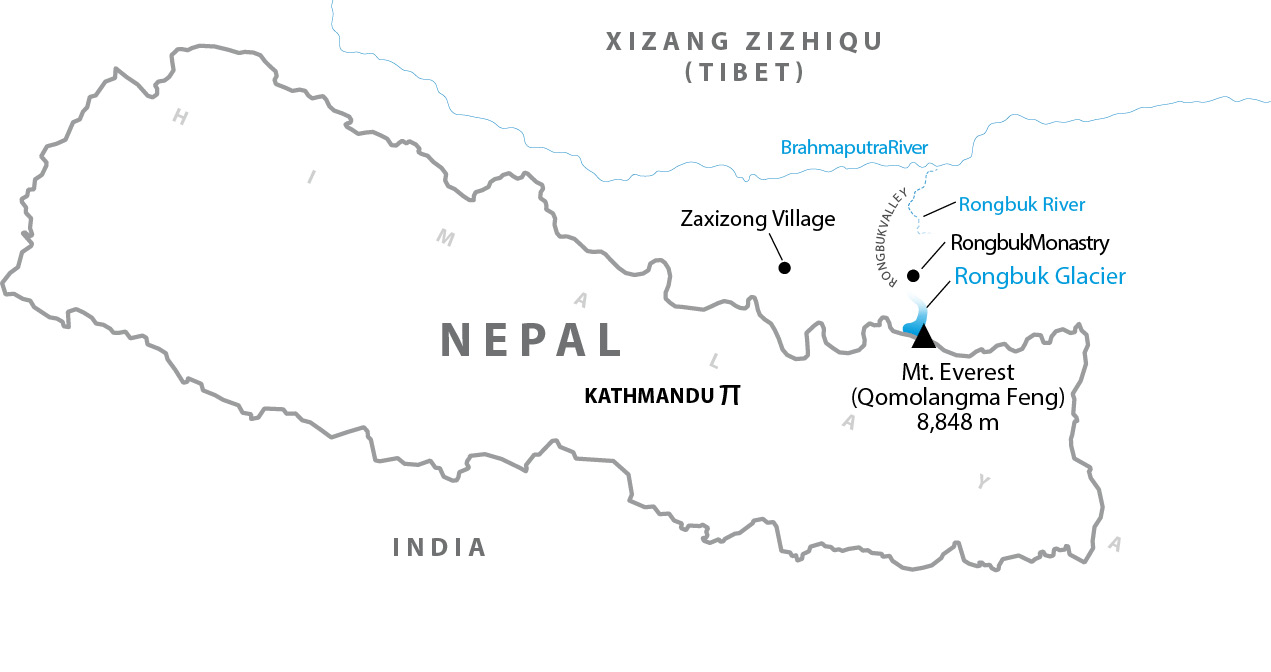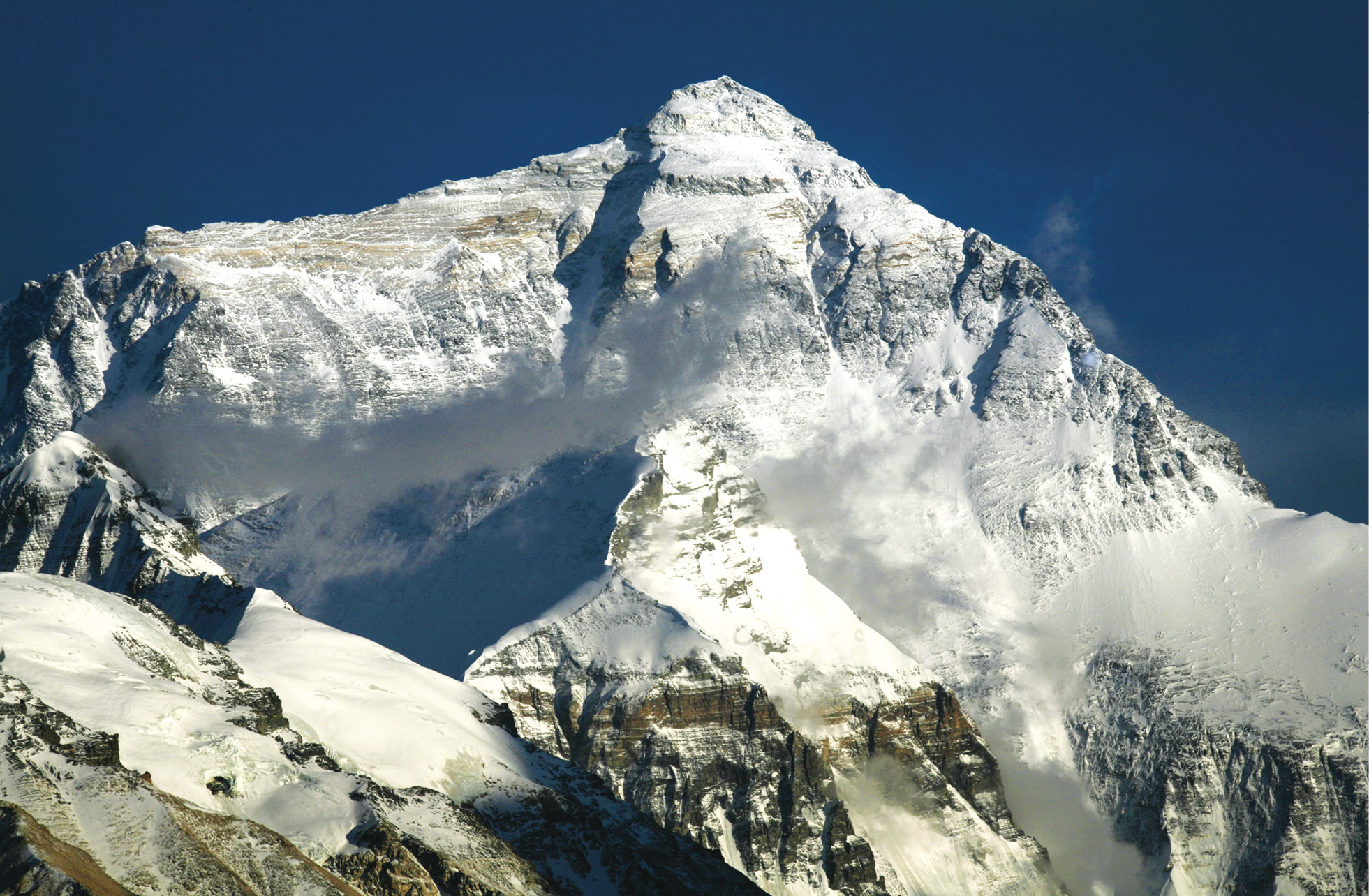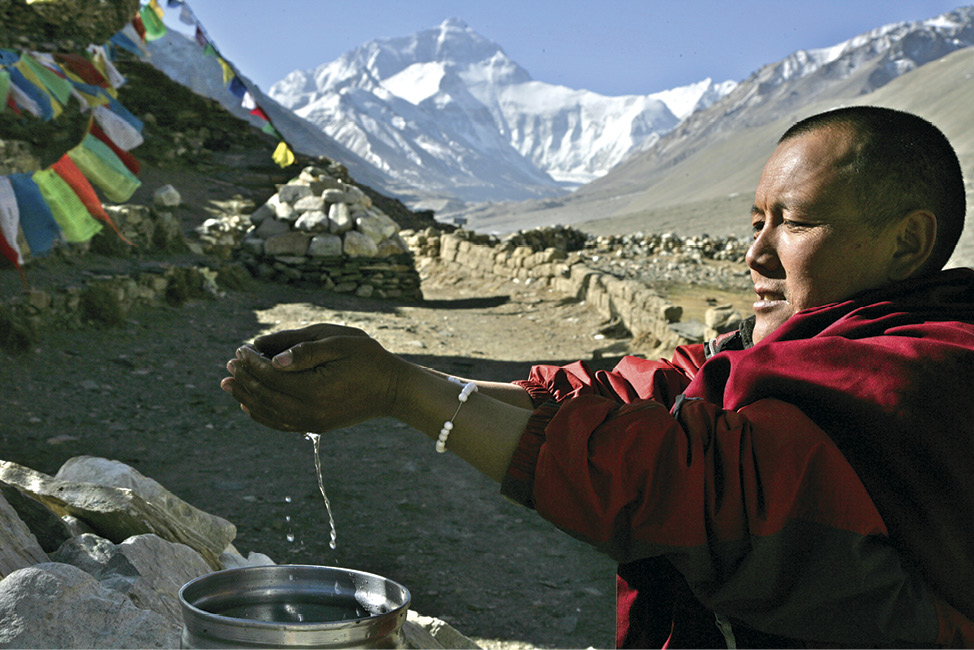
(Text by Wang Guan Li. Photos by John Novis/Greenpeace)
Glaciers in the Himalayas used to provide the water source for one-sixth of humanity. Dubbed the “Third Pole”, for having the largest concentration of glaciers outside the polar caps, the Himalayas boast 11 peaks over 8,000 metres and around 100 over 7,000 metres. Scientists predict that 80 percent of Himalayan glaciers will disappear within 30 years if current warming rates are maintained
LATE April, a research team left Beijing to document glacial retreat on the world’s highest peak, Mount Everest (Qomololangma). The plan was to gather visual evidence of the retreat of the Rongbuk Glacier, Everest’s main glacier, 5,800 metres above sea level. Such evidence may help to build awareness, especially in China, of the mounting threat of climate change.
The team met local guide Bianba Dunzhu in Lhasa, the “place of the gods” in the Tibetan language. An instructor with the Tibet Mountaineer Training School, Bianba has twice made it to Everest’s summit. He has also climbed the world’s second highest peak, K2 (Mount Qogir).
“Although I am a mountain guide, I dare not conquer Mount Everest too many times. Human beings must respect the holy mountains,” Bianba says, recalling the fate of a Nepalese guide who had reached the summit over a dozen times but tragically died at the prime of his life – with no obvious cause of death.

With this reminder in mind, the researchers set off from Lhasa, via Shigatse, Tingri and Zaxizong, towards Mount Everest. The expedition also aimed to collect evidence of climate change impacts on the region’s river systems. The Himalayas and the Qinghai-Tibet plateau are the source of some of the world’s major river systems: the Indus, Ganga-Brahmaputra, Mekong, Yangtze and the Yellow River, to name a few. Almost a billion people live in the watershed areas of these great rivers in China, India, Nepal and Bangladesh.
The first river that could be reviewed was the Lhasa River, as the team drove from the airport to downtown Lhasa. The observers were immediately struck by the large deposits of sand on both banks of the river, a sure indication of the desertification spreading throughout the region. The following day, the expedition crossed the Brahmaputra River. Once famous for its abundant runoff, the flow of the Brahmaputra is now much reduced, with many shallow sections visible.
Drawing ever nearer to Everest, the team arrived at the Rongbuk River, which is formed by meltwater from the Rongbuk Glacier, the area’s largest. Forty years ago, the annual runoff of the Rongbuk was around 100 million cubic metres. The flow has now been greatly reduced due to the rapid retreat of the glacier.

The Qinghai-Tibet Plateau has a staggering 46,298 glaciers. However, recent surveys via remote sensing and fieldwork have recorded a 10 percent reduction in the last three decades, from 48,860 square kilometres in the 1970s to 44,438 square kilometres today. The alarming acceleration of the retreat has been attributed to increased global warming.
At an altitude of 5,200 metres, the tiny village of Zaxi-zong is located at the entrance to the Mount Everest Nature Reserve. A small, nearly dry river runs past the village. Renzeng, a 48-year-old farmer, says that generations of villagers have relied on the same river to irrigate their crops and supply their other water needs. “Now,” Renzeng says, “due to lack of irrigation, the yield of highland barley in our village is less than half what it used to be.”

A little further along the slope, Rongbuk Temple is a wonderful place to gaze at the majestic mountain. The Tibetan name for Everest, Qomolangma, means “Goddess”, and the rocky deity unveils herself gracefully, a vision of pure beauty. In Tibetan paintings, Qomolangma is always depicted wearing a white gown and riding a white lion through ice and snow. The chief lama of the Rongbuk Temple has been at the temple for 20 years and has witnessed the impacts of climate change first-hand.
“I have noticed a reduction in the flow of the Rongbuk River every year and each year is hotter than the last,” he points out. “I am worried about the harsh future our children will suffer.” Other lamas say that before they used to have to force their way through chest high snow; now, the winter snow only reaches their shins.
The serac forests of the Rongbuk Glacier amazed Chinese scientists in the 1970s. Seracs are large blocks and columns of ice found near glacial crevasses formed by the glacier moving or melting. “With a great variety of shapes and forms, the serac forests there made us linger with no intent to leave. Those between 5,300 metres and 6,500 metres are extraordinarily beautiful and fantastic, like an ‘ice sculpture park’,” they wrote in one report. In contrast, the team finds a serac forest at 5,600 metres, but it is sparse, small and worn. The huge “ice mushrooms” that should have towered above them have almost disappeared.
“When I first climbed Mount Everest in 2000, I saw serac forests at 5,400 metres. When I climbed the mountain again in 2006, I only found the serac forests from 5,800 metres,” says Bianba. The disappearance of glaciers, large-scale landslides, rockfalls and sparse serac forests – all are clear proof of rising temperatures.

Himalayan glaciers may very well shrink from the present 500,000 square kilometres to one-fifth that size by the 2030s. The February 2007 release of the Intergovernmental Panel on Climate Change (IPCC) report on the science of climate change concluded that there was 90 percent certainty that global warming is caused by human behaviour. The report galvanised the European Union to set a target of reducing carbon emissions by at least 20 percent from 1990 levels by 2020, and by 30 percent if other industrialised nations set similar targets.
For the rest of this article (Asian Geographic No.78 Issue 1/2011) and other stories, check out our past issues here or download a digital copy here











